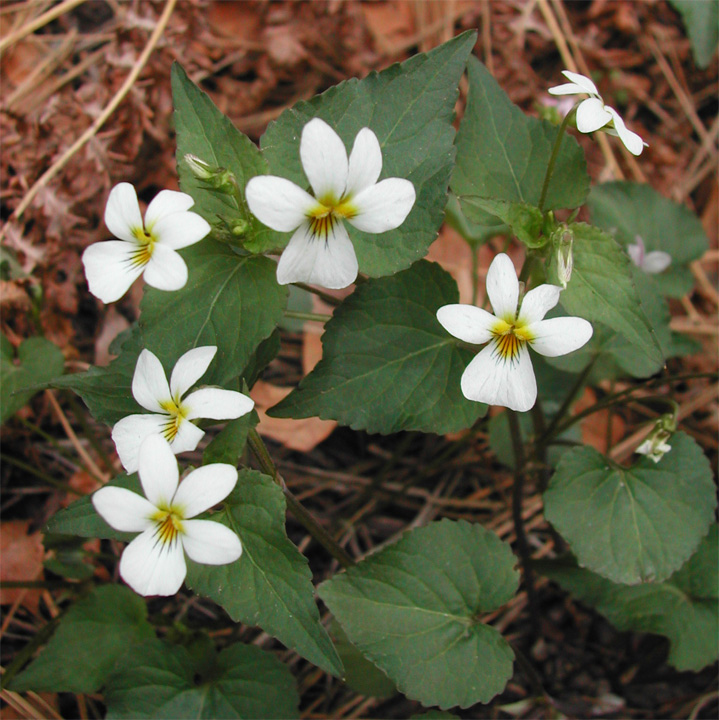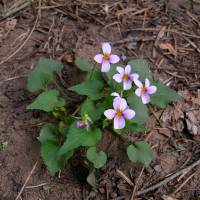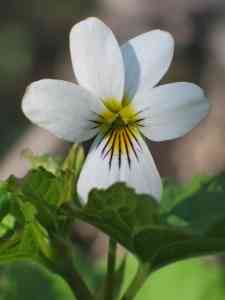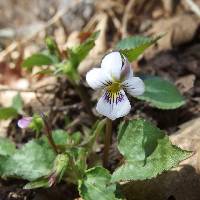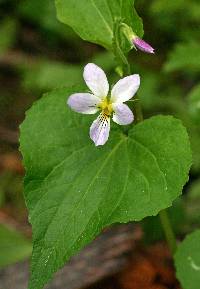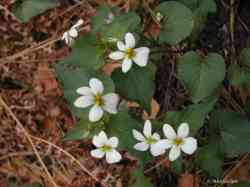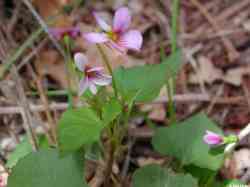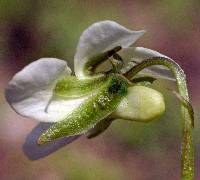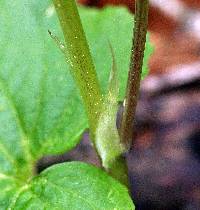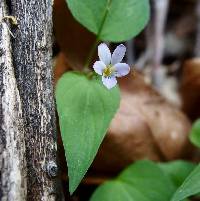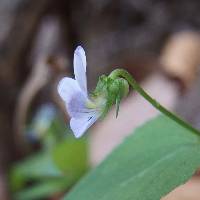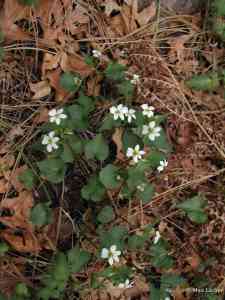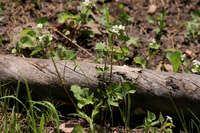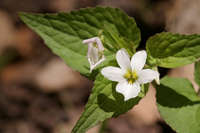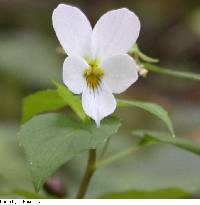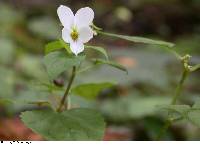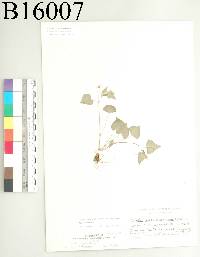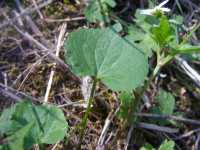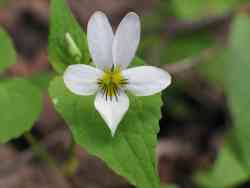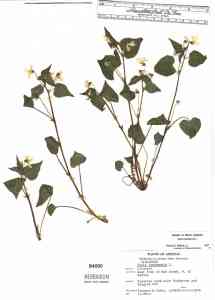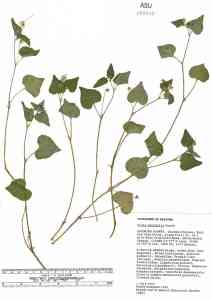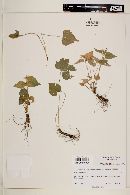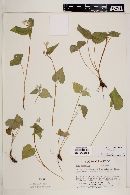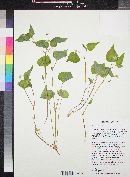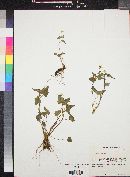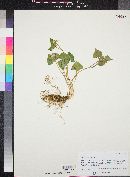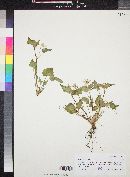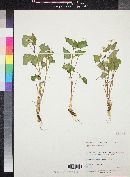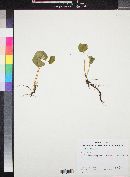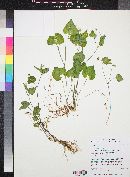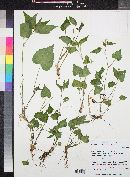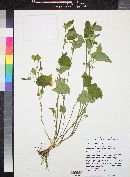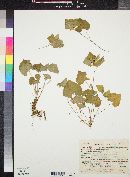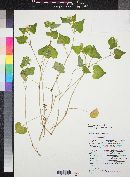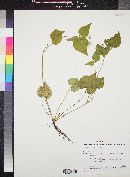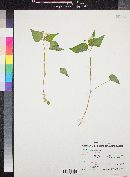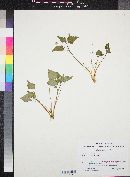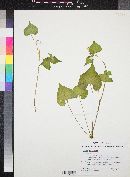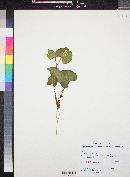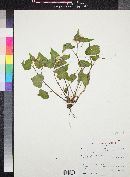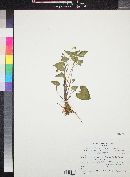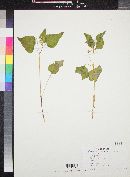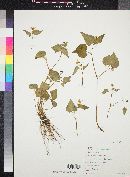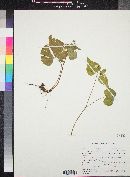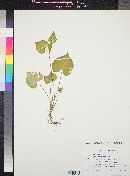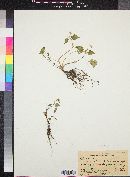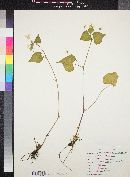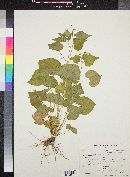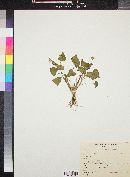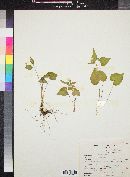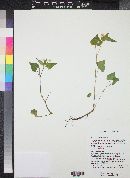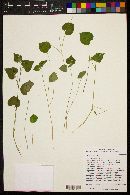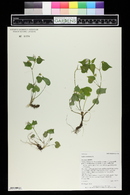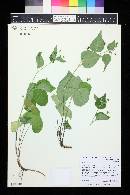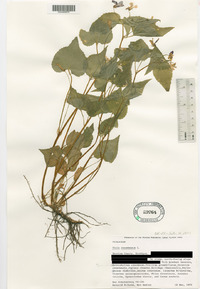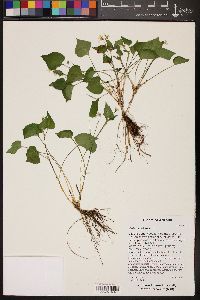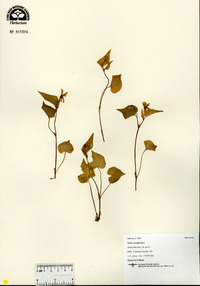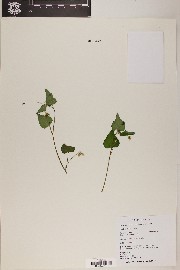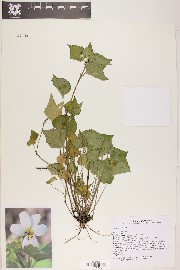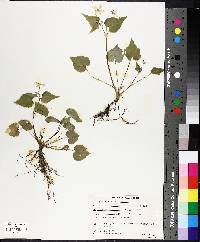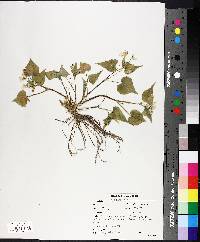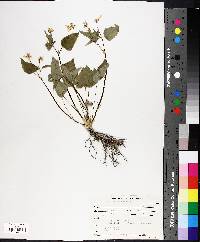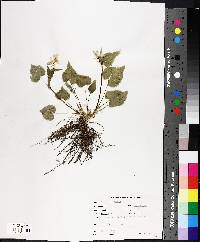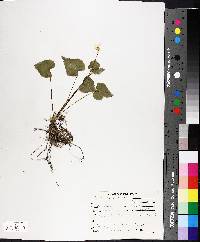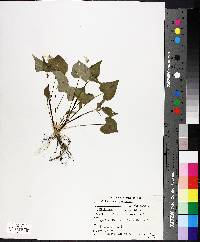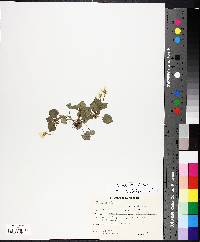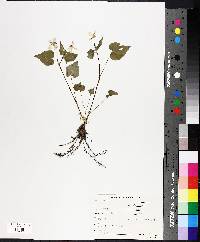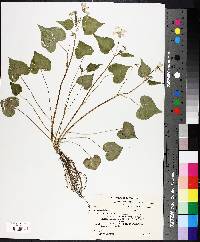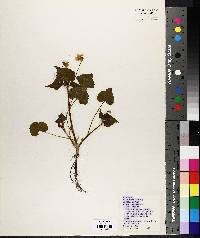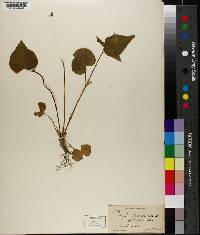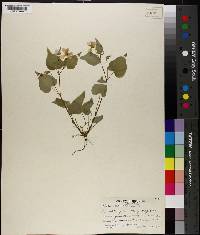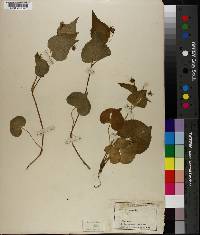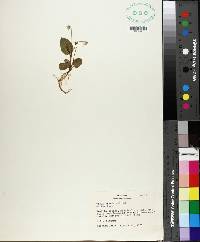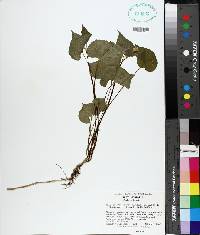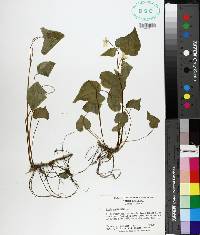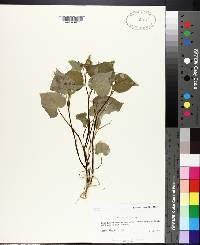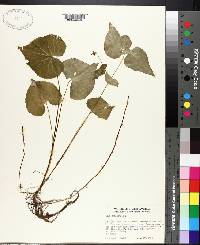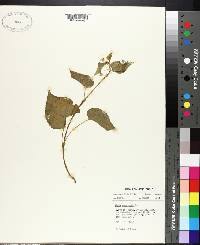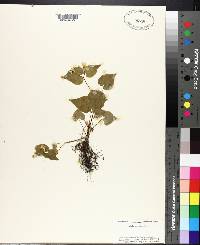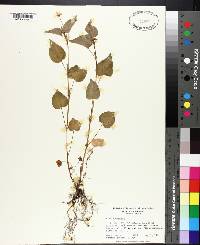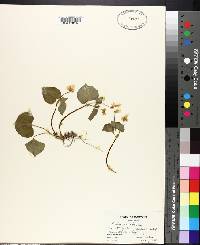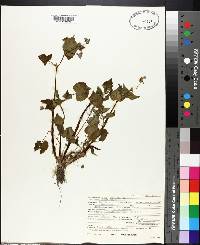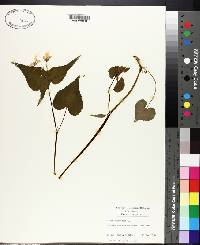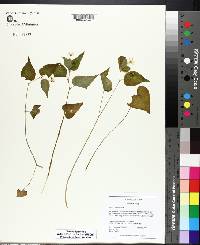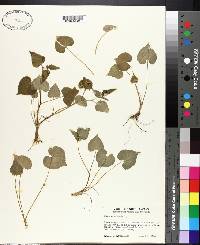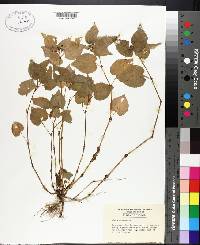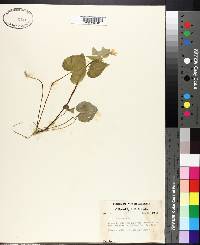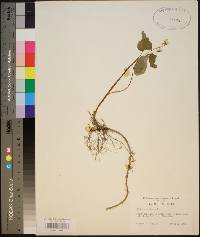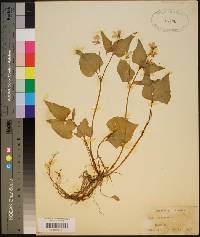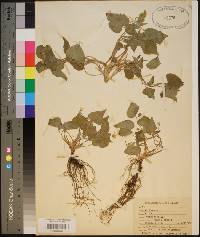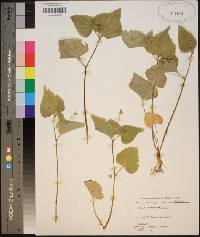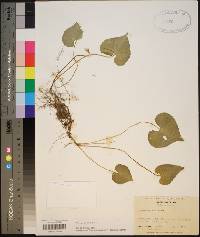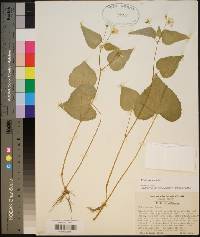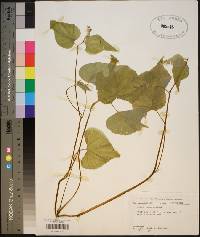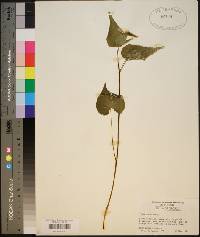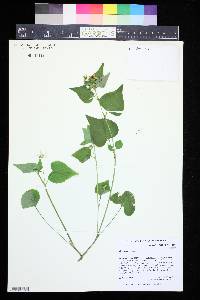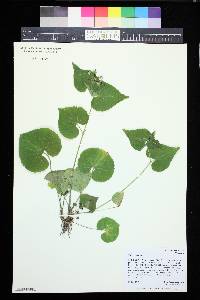
|
|
|
|
Family: Violaceae
Canadian White Violet, more...Canada violet
[Viola canadensis var. neomexicana, moreViola geminiflora , Viola neomexicana] |
Plant: perennial herb; 15-23 cm tall. STEMS erect, branched above, glabrous to puberulent, from vertical rootstalks or creeping rhizomes Leaves: simple, basal and cauline; blades with sparse hairs along major veins, the margins ciliate especially at base; basal leaf petioles 50-120 mm long, puberulent, the blades 22-62 mm long, 24-67 mm wide, ovate-reniform, serrate, the base cordate, the tip attenuate, acute; cauline leaf petioles 5-52 mm long, the blades 31-55 mm long, 21-43 mm wide, ovate to triangular, serrate, the base cuneate, truncate or cordate, the tip acute INFLORESCENCE: axillary, the pedicels to 2.2 cm long, glabrous to puberulent Flowers: from upper leaf axils; sepals to 6 mm long; petals white, the lower 3 with yellow eyespot and purple-veined, the lateral 2 white-bearded, the outer side of petals often purple-tinged, the lowest petal (including spur) 8-9 mm long, the spur short, gibbous Fruit: FRUITS 3-6.5 mm long, glabrous; SEEDS ca. 15-20, usually ovoid, with a prominent caruncle Misc: Riparian habitats in coniferous or aspen forests, or moist, shaded slopes in sandy, rich, or rocky soil; 1200-3550 m (4000-11,600 ft); Mar-Oct REFERENCES: Little, R. John. Violaceae. 2001. J. Ariz. - Nev. Acad. Sci. Volume 33(1). Perennial herb 20 - 40 cm tall Stem: erect, hairless or minutely hairy with both leaves and flowers, and arising from a creeping rhizome. Leaves: both basal and alternate, long-stalked, heart-shaped (upper leaves often longer than wide), 5 - 10 cm long, and variously toothed. The stipules, which sometimes fall off early, are white, thin and papery, about 1 cm long, non-toothed, and narrowly lance-shaped with a long pointed tip. Flowers: in upper leaf axils, long-stalked, white with yellow centers (often purplish on outside), about 1.5 cm long, bilaterally symmetric with two upper petals, two lateral petals, and lower petal with base modified into a rounded nectar spur. In the summer, producing very fertile flowers that do not open (cleistogamous). Sepals: five, green, lance-shaped with ear-like appendages (auricles) at the base. Petals: five, separate, all differently shaped, white with yellow base, tinged purplish on outside, and lower three with purplish lines toward base. The two lateral petals have a beard of hairs near the base, and the lowest petal is prolonged at its base into a short, rounded spur or sac. Stamens: five, separate, but very tightly arranged so anthers touch as they surround ovary. The filaments are very short, and the lower two stamens have spur-like nectaries on their backs that extend into the spur or sac of the lower petal. Pistil: with a single-chambered, superior ovary; a single bearded style that enlarges near the tip; and a head-shaped stigma. Fruit: a many-seeded, ellipsoid to globular capsule that opens lengthwise from top. The seeds have a large amount of oily endosperm, and often an appendage (aril). Similar species: Viola canadensis is probably most often confused with V. striata, but that species has creamy-white flowers with fringed sepals, and green stipules with heavy fringe along the edges. Also similar is V. pubescens (and its two varieties), but that species has solid yellow flowers, more egg-shaped stipules that are green and herbaceous, and the stem leaves are usually wider than long. This is the only truly white-flowered species of Viola in the Chicago Region (versus creamy white) that has both leaves and flowers along the stem. While most species of Viola that have purplish flowers can produce albino (all white) flowers, they can be distinguished by not having evident stems, and the stipules having fringe or deep lobes. Flowering: April to June Habitat and ecology: Not common, mostly in the eastern parts of the Chicago Region in mesic sugar maple woods, especially preferring more neutral or alkaline soils. Occurence in the Chicago region: native Notes: This species can be quite variable throughout its range in characteristics of hairiness, size of the rootstalk or rhizomes, shape of the leaves, and number of stems per plant. Some authorities split the species into two varieties (the typical variety, and V. canadensis var. rugulosa), but we follow the treatment of Ballard 1994. Etymology: Viola is the classical name for the genus. Canadensis means "of (or from) Canada and North America". Author: The Field Museum JANAS 33(1), Kearney and Peebles 1969 Duration: Perennial Nativity: Native Lifeform: Forb/Herb General: Perennial herb, erect, to 30 cm tall, stems branching, herbage glabrous to pubescent, arising in clusters from vertical rootstocks or creeping rhizomes. Leaves: Basal leaves ovate to kidney-shaped, to 6 cm long, simple, basal, and cauline, with crenate margins, margins ciliate, especially near the base, the leaf tip attenuate, the base cordate, with sparse hairs along the veins, petioles to 12 cm long; cauline leaves ovate to triangular, to 5.5 cm long, margin serrate, the bases cordate to truncate, the tip acute, borne on petioles to 5 cm long. Flowers: White, the lower 3 with a yellow throat and conspicuous longitudinal purple veins, the margins sometimes purple-tinged, the lateral petals with a tuft of white hairs at the base of the petals, with the bottom petal bearing a short, gibbous spur, flowers borne in upper leaf axils. Fruits: Glabrous fruits to 11 mm long. Seeds ovoid, many, with a prominent caruncle. Ecology: Found in wet areas of sandy, rich, or rocky soils, along streams or creeks and shaded slopes in coniferous or aspen forests, from 4,000-11,500 ft (1219-13505 m); flowering March-October. Notes: Determine this species by its branching habit and white flowers. Synonyms: Many, see Tropicos Editor: LCrumbacher, 2011 Glabrous or minutely to less often evidently hairy; stems 2-4 dm; basal lvs well developed, long-petioled, ±cordate at base, often relatively wider than the cauline ones; cauline lvs several, the lower widely spaced, the upper larger and more crowded, mostly cordate and 5-10 cm; stipules lance-acuminate, entire, whitish and subscarious; fls slender-pedicellate from the upper axils; pet white inside, with a yellow base, the 3 lower ones with purplish lines toward the base, the lateral ones bearded, all (but especially the upper pair) ±purplish-tinted on the outside and sometimes less strongly so on the inside; style bearded at the capitate summit; frs ellipsoid-globose; 2n=24. Moist woods, Nf. to Alas. and B.C., Ala., Ark., and Ariz. Mostly Apr.-July. Most of our plants belong to var. canadensis, widespread in e. U.S. and adj. Can., with a short, stout rhizome, short or no pubescence, and lvs usually longer than wide. The chiefly western var. rugulosa (Greene) C. L. Hitchc., colonial by long stolons or superficial rhizomes, usually evidently hairy, and with the lvs often wider than long, extends e. to Wis. and Io. and is disjunct in the mts. of sw. Va., nw. N.C., and e. Tenn. (V. rugulosa) Gleason, Henry A. & Cronquist, Arthur J. 1991. Manual of vascular plants of northeastern United States and adjacent Canada. lxxv + 910 pp. ©The New York Botanical Garden. All rights reserved. Used by permission. |
|
|
|

